Every NFL offense has a play, or a specific scheme, that gives opposing defenses trouble when it comes to matchups and limiting production. Some of these offensive concepts can be as simple as a three-step route combination or an off-tackle power play, while others -- such as RPOs, pick plays and max-protection deep shots -- can put enormous stress on the defensive reads and coverages. Today, let's run through all 32 offensive playbooks in the league and break down each team's most unstoppable play.
You can read the whole file or go directly to your team by clicking on one of the links below.
ARI | ATL | BAL | BUF | CAR | CHI | CIN | CLE | DAL | DEN | DET | GB | HOU | IND | JAC | KC | LA | MIA | MIN | NE | NO | NYG | NYJ | OAK | PHI | PIT | SD | SF | SEA | TB | TEN | WAS
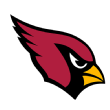
Arizona Cardinals
Play: Three-Level Flood | Personnel: 10 (4WR-1RB)
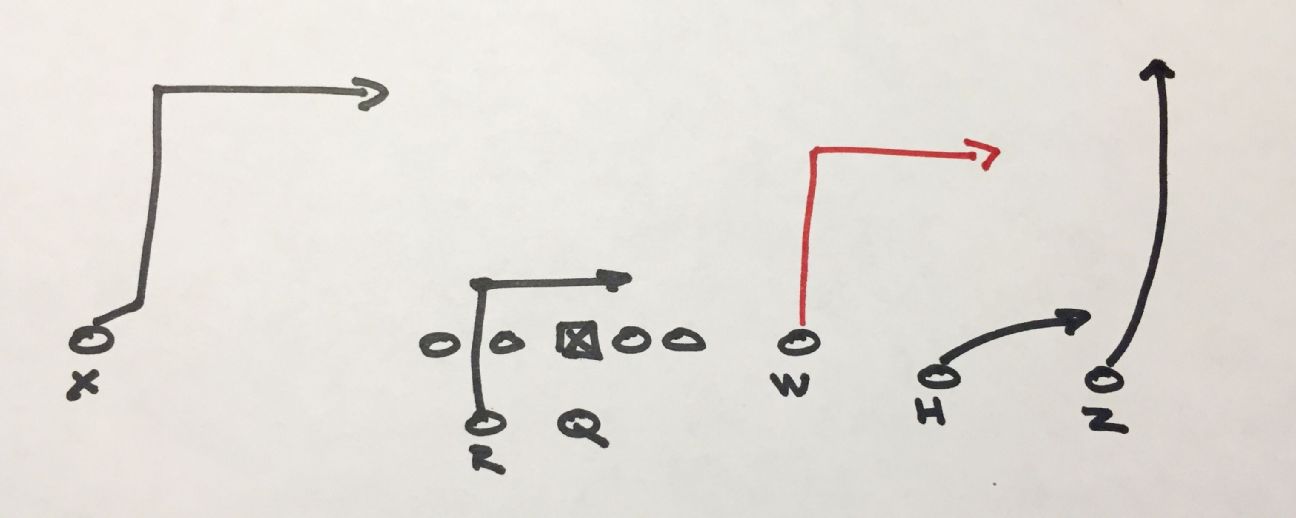
How it works: The flood route is a pretty standard concept in the NFL run from multiple formations and alignments. It's a Cover-3 beater that removes the cornerback with the deep clear out from Z receiver. That creates space in the outside one-third of the zone for the quarterback to go to work on the strong safety (curl-flat defender). If the safety sinks, throw the flat (H). If the safety settles, then target the deep out (W). However, given the personnel in Arizona, quarterback Carson Palmer will target the clear-out (Michael Floyd, J.J. Nelson), throw the deep out (John Brown), hit the flat (Larry Fitzgerald) and even come back to the weak side dig route (X). Arizona loves to throw deep inside cuts in Bruce Arians' offense. Yes, the route is designed to beat Cover 3, but in Arizona, there's no such thing as a clear-out route. Everyone is a target. And that puts enormous pressure on opposing secondaries.

Atlanta Falcons
Play: Yankee Route | Personnel: 21 (2WR-1TE-2RB)
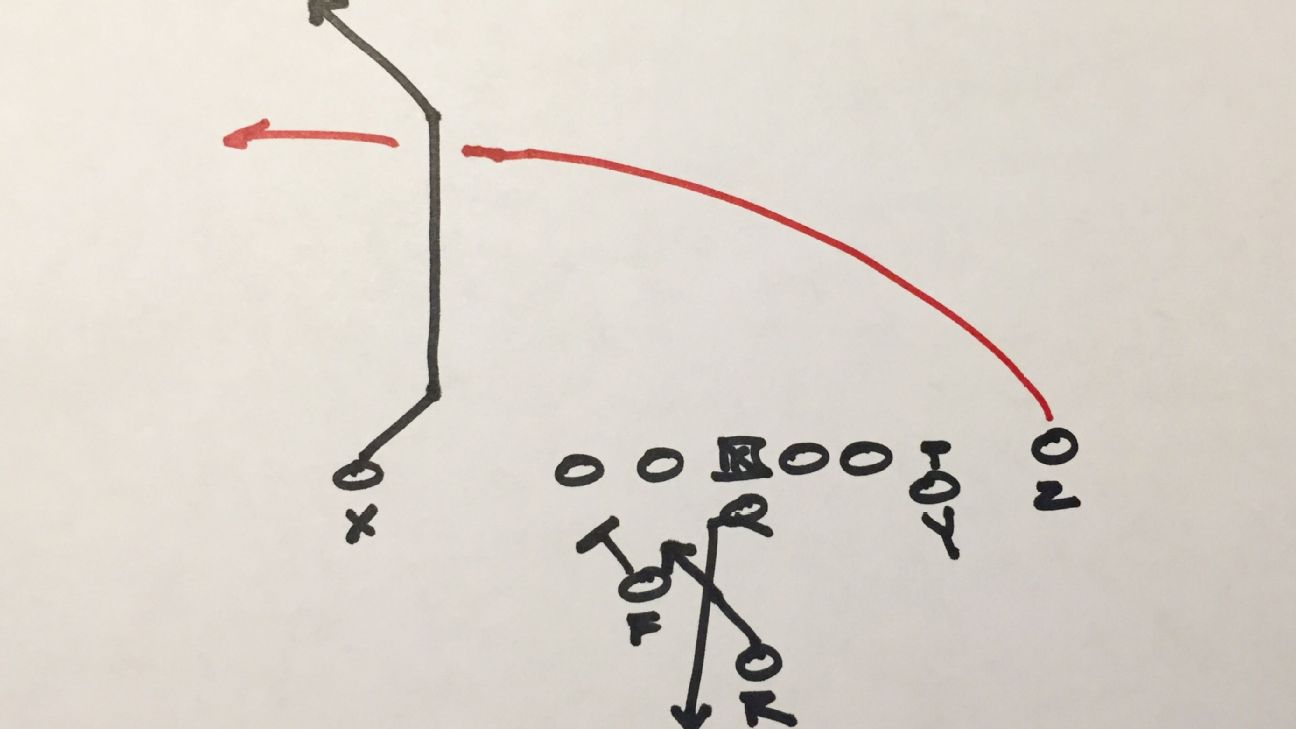
How it works: The Yankee route is a deep play-action concept in Kyle Shanahan's offense that opens up the deep half (or outside one-third) of the field to target wide receiver Julio Jones for an explosive gain. In this scheme, the Falcons will reduce the split of Jones (Z) to get a free release while showing play-action in the backfield. To the open (or weak) side of the formation, the X receiver runs a deep 7 (or corner) route to push the cornerback/free safety down the field in single high looks or to remove the deep half safety in Cover 2. It's basically a decoy route, a clear-out to occupy the top of the defense while Jones works back across the field on the deep crosser. Now, with max-protection up front, quarterback Matt Ryan has time to set his feet and target Jones with tons of space to work with. That's easy money.

Baltimore Ravens
Play: Spot (Pick) | Personnel: 12 (2WR-2TE-1RB)

How it works: The spot (or snag) route (corner-curl-flat) is ultracommon in every level of football. But in Baltimore, the Ravens and offensive coordinator Marc Trestman use some window dressing by alignment to create natural "picks" inside of the red zone. With 12 personnel in the game, the Ravens align two wide receivers in a stack look (X, Z) and motion the tight end (U) to the open side of the formation creating a trips look. This allows the Ravens to create a mess of traffic off the stack releases (corner, curl) with the tight end bursting to the flat. It's a great man-coverage beater as it forces the defender in coverage to work through the wash to match the tight end. The result? This is an easy read and an easy throw for quarterback Joe Flacco to target the flat for six.

Buffalo Bills
Play: Buck Sweep (Lead) | Personnel: 21 (2WR-1TE-2RB)

How it works: With LeSean McCoy in the backfield, the buck sweep out of the Split-Back Gun alignment is a weapon for the Bills. Remember, McCoy (R) is smooth. Super smooth. And he's also very patient with the ball. That's why this scheme caters to his skill set. With the Bills blocking down on the edge and pulling the play-side guard and center, gaps move from a defensive perspective. That forces linebackers and safeties to react to the pull and play cut-off/force. The Bills have that covered with a lead-blocking fullback (F). That's a lot of beef on the edge with a running back in McCoy who can press the ball or cutback to find daylight. Nasty. The next step for the Bills? Add a read element to the backside with quarterback Tyrod Taylor off the mesh point.

Carolina Panthers
Play: QB Power | Personnel: 12 (2WR-2TE-1RB)

How it works: The Panthers' QB power might be the most unstoppable red zone scheme in the NFL today. Cam Newton is built like a defensive end, and he has the perfect mix of power and athleticism to push the ball into the end zone off a downhill power scheme. With 12 personnel on the field, the Panthers align the running back (R) to the play side and shift him up (almost like a fullback alignment). This creates the proper angle for the running back (R) to kick out the edge. Meanwhile, the tight end (Y) blocks down and the backside guard pulls up through the hole to attack the second level. Now, on the goal line, this could turn into a mess of bodies at the point of attack. But given the scheme's ability to carve out some daylight and Cam's rare talent, the Panthers' QB can drop his shoulder or go up over the top for the score. You want unstoppable? This is it.

Chicago Bears
Play: RPO (Triple Option) | Personnel: 11 (3WR-1TE-1RB)

How it works: Yes, 2015 play caller Adam Gase is gone. But even with the shift to new OC Dowell Loggains, we should expect the Bears to run their RPO (run-pass option) schemes in 2016 with quarterback Jay Cutler. My favorite and the toughest to defend? It's the modern-day triple option. In this scheme, Cutler has the option of handing off to the running back on the inside zone (R), keeping the ball on the pull (Q) or throwing the tunnel screen (Z) to the outside. This is all predicated on the defensive look Cutler gets pre-snap, but the idea is simple: If the edge defender dives toward the running back, Cutler keeps the ball and then options the second-level defender (linebacker/strong safety). If that defender closes, Cutler throws the screen. And if the defender works outside, Cutler can keep the rock and get up the field. In short, the offense is always right in this RPO scheme -- if the QB reads it correctly.

Cincinnati Bengals
Play: 999 | Personnel: 11 (3WR-1TE-1RB)

How it works: "999" is another way of saying four verticals from a 3x1 alignment to attack the inside seam. Here, the Bengals use a "Dakota" formation. That means the tight end (Y) is aligned to the backside of a 3x1 formation with wide receiver A.J. Green (Z) aligned as the No. 2 receiver (count outside-in) to the open side. And that's where the ball is going. To the open side, the X receiver takes a hard outside release to widen the cornerback, while the H receiver takes an inside stem to work back across the formation. That forces the free safety to hold in the middle of the field and opens up a deep inside throwing window for quarterback Andy Dalton to target Green. That's tough on 3-deep coverage. And if you want to play Cover 2, the safety has to widen over the top of X, creating more room for Green to work the seam. That's stealing for the Bengals with one of the top wide receivers in the game.

Cleveland Browns
Play: Power-Read | Personnel: 11 (3WR-1TE-1RB)

How it works: We could go back to the RPOs Hue Jackson ran last year in Cincy or look at all the vertical concepts the Browns have run this August with RG3, but I am going with the power-read because the scheme is tough on the linebackers' run keys. I fully expect Jackson to build in a pass option into this scheme during the season, but for now, we are looking at a one-read play. This is the same one-back power we see around the league with the added QB run element. When linebackers see a guard pulling, they're taught to scrape down the line. And that leaves Griffin reading the end-man. If he crashes, pull the ball. If he stays up the field, hand it off and run the power play. Either way, the Browns have designed a scheme that puts them in an advantageous position.

Dallas Cowboys
Play: Hi-Lo Crossers | Personnel: 12 (2WR-2TE-1RB)

How it works: With rookie quarterback Dak Prescott expected to start the season as the Cowboys' No. 1 QB, I would expect Dallas to run this route often because it creates space underneath for wide receiver Dez Bryant (X). And it's also a very high-percentage throw. This is a pick route, a Hi-Lo scheme (two-level read) with Bryant working back across the field. With Bryant aligned in the open side slot, the Cowboys run two underneath crossers (Lo). This allows the second tight end in the game (U) to set a pick from Bryant with Jason Witten (Y) running the dig (Hi). Prescott has a two-level read inside, but the goal is to create room for Bryant. The receivers on the outside? Total decoys, running routes to widen the defense for Bryant to catch the ball in space. Whether the defense is playing man or zone, this scheme is a big play waiting to happen for the Cowboys.
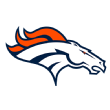
Denver Broncos
Play: Crack Toss | Personnel: 11 (3WR-1TE-1RB)

How it works: Remember the Broncos' Sunday night win over the Patriots during the 2015 season? This is the play that closed out the game in OT. With 11 personnel on the field, the Broncos align in a bunch formation to the closed side of the field and block down with both wide receivers (Z, H) cracking on the edge. That allows the tight end (Y) and the closed-side tackle to pull with the running back following the blocks. The key here is the secondary run support. When the wide receivers block down, it forces the cornerback and safety to fill or "replace" on the edge. And that creates an advantage for the offense with size at the point of attack. Often, those secondary players will widen (instead of closing downhill at a 45-degree angle), opening up a massive running lane for the back (R) to get vertical up the field.
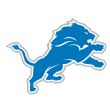
Detroit Lions
Play: Red Zone Slant/Rub | Personnel: 11 (3WR-1TE-1RB)

How it works: The Lions run a sweet pick (or rub) route in the red zone to get the ball to wide receiver Golden Tate. In this scheme, Tate (Z) aligns as the No. 1 receiver to the closed side of the formation and runs the slant. But the key here is the release (and route) of the No. 2 receiver (H) on the outside cut. The pick makes the cornerback in coverage choose between two options that won't work given the limited space of the red zone: Go underneath the pick (bad idea) or bubble over the top (not enough time to get back in phase). The result -- based on the tape -- is a wide open target for quarterback Matthew Stafford to deliver the ball and an easy six points. Legal play? Probably not. But they don't call this stuff in the NFL very often.
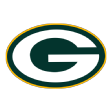
Green Bay Packers
Play: Sting Route | Personnel: 21 (2WR-1TE-2RB)

How it works: With Jordy Nelson back in the mix for Green Bay, expect to see Aaron Rodgers take some deep shots versus Cover 2. The sting route is a double move designed to isolate Nelson versus a deep-half safety. With the Packers using max-protection off play action, Rodgers should have enough time to let this play develop. With Nelson (Z) in a reduced split, he gets a free release versus rolled up cornerback in two-deep. The Packers' receiver takes a straight, vertical release down the field and stems to the corner before breaking back to the post. This forces the deep-half safety to open his hips while Nelson breaks inside to beat his leverage. And with the X receiver running a deep dig route to hold, or occupy, the free safety, the middle of the field is now wide open for Rodgers to target Nelson over the top. Time to strike up the band and play the fight song. That's an easy six.

Houston Texans
Play: RB Angle | Personnel: 11 (3WR-1TE-1RB)

How it works: Yes, the fade to DeAndre Hopkins is always open, but the Texans have a great scheme to isolate the running back in the passing game when they move the ball into the red zone. Last year, that was Arian Foster. And this year, Houston can use Lamar Miller in this same scheme to create a matchup issue for the defense. With the Miller (R) in a "chowed" alignment (outside leg of the tackle) and X in a nasty split (tight to the core), the Texans are basically running a rub route. Miller takes a hard outside release with the linebacker in coverage working over the top of the pick. That forces the linebacker to overplay the stem from Miller and opens up a path inside to break back on the angle. To the closed side of the formation, the Texans have two vertical options with Hopkins (Z) running a fade from the slot (tough to cover given the space), but the ball is designed to go to Miller here. Play the matchups -- and expose them.
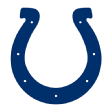
Indianapolis Colts
Play: Semi-Curl | Personnel: 12 (2WR-2TE-1RB)

How it works: The Colts can get the ball to wide receiver T.Y. Hilton in the vertical passing game using the semi-curl concept (Curl + Seam). In this scheme, Hilton (Z) aligns in the slot to the open side of the formation with the outside receiver (X) running a curl. If the defense is playing Cover 3, the curl will occupy the outside cornerback, allowing Hilton to split the top of the defense. If it's man coverage, Hilton now has room to run the seam while fading toward the sideline. This is a simple route scheme at the pro level, but given Hilton's speed and the deep-ball ability of quarterback Andrew Luck, the Colts can beat zone coverage and also expose one-on-one matchups based on Hilton's inside alignment.

Jacksonville Jaguars
Play: Shake Route | Personnel: 11 (3WR-1TE-1RB)

How it works: In the red zone, the Jags have a nice route combo that gives quarterback Blake Bortles options on both sides of the field. To the closed side, wide receiver Allen Robinson (X) runs the shake route -- a quick double move designed to beat both man and zone coverage. Robinson stems hard to the outside and then bursts back to the post. Brutal to defend. To the open side, the Jags are running a rub route with tight end Julius Thomas (Y) running the slant off the corner route from the Z receiver. This scheme should produce almost every time given the route running ability of Robinson and the pick concept that's designed to free up Thomas on the inside break.
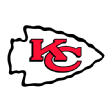
Kansas City Chiefs
Play: Hi-Lo Triple-In | Personnel: 13 (1WR-3TE-1RB)

How it works: Andy Reid has been running this route since I played against the Eagles in the early 2000s, but he has done an excellent job dressing it up and highlighting his personnel. In this scheme, the Chiefs align in a "huge wing" (three tight ends) and run three inside breaking routes with the Y on the dig, the U on the shallow drag and Travis Kelce (H) on the deep-angle cut. This gives quarterback Alex Smith a three-level read inside the red zone, with Kelce using his frame to create leverage on an inside cut. Why use three tight ends? Because it forces the defense to match a cornerback on Kelce. Good luck getting through him to play the ball. He's too big and too strong at the point of attack. Great design.

Los Angeles Rams
Play: One-Back Power | Personnel: 11 (3WR-1TE-1RB)

How it works: The one-back power? That's not complicated, or exotic, and the defense should be able to stop this no problem, right? Sure -- until you add running back Todd Gurley to the mix and a light-run front. You see, with three wide receiver personnel on the field, the defense has to bring their nickel package into the game, resulting in a seven- or six-man front. This allows the Rams to block down and pull the backside guard up through the hole and get to the second level. Simple. But the key is Gurley. He has great vision and a great burst. And he doesn't need much to get through the hole before he's gone. The Rams can feast on nickel packages with this play. And Gurley can showcase his ridiculous skill set too.
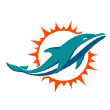
Miami Dolphins
Play: RPO (Bubble) | Personnel: 11 (3WR-1TE-1RB)

How it works: The Dolphins have already shown this preseason that they will run RPO schemes with quarterback Ryan Tannehill. Quick reads and quick passing. Take advantage of the defensive look. In this scheme, Tannehill has options based on the numbers. If he sees a 3-on-2 advantage to the outside, then throw the bubble to H. If not, he reads the end man on the line of scrimmage through the mesh point. Hand off to the running back (R) on the inside zone or keep the ball on the pull (Q). Like I said above with the Bears, Miami can't be wrong if Tannehill makes the right pre-snap read (numbers advantage) and post-snap read (path of end man on the line of scrimmage).

Minnesota Vikings
Play: Counter OF (Lead) | Personnel: 22 (1WR-2TE-2RB)

How it works: With quarterback Teddy Bridgewater scheduled to miss the season due to a knee injury, look for the Vikings to feed Adrian Peterson the football in the downhill run game. Yes, the Vikings really like inside zone with Peterson out of one-back sets, but the Counter OF is a nasty power scheme that will create a lane for the All-Pro back. Here, the Vikings shift a tight end (U) into the backfield to create an inverted wishbone look. That allows the tight end to lead on the edge (kick-out) with the backside guard pulling to the play side and the fullback (F) working up through the hole to dig out the linebacker. This is as downhill as it gets. And with Peterson carrying the ball, that's a scary combination to face as a linebacker.

New England Patriots
Play: Play-Action Dig | Personnel: 12 (2WR-2TE-1RB)

How it works: The Patriots have the best play-action game in the NFL because they pull a guard. That's a false-run key for the linebackers, and it opens up throwing windows for the quarterback to target tight end Rob Gronkowski. In this situation, the Patriots pull the backside guard to show a one-back power scheme. This forces the linebackers to attack downhill, removing the second-level defenders from the middle of the field. That allows Gronkowski (Y) to break his route back to the now-vacated middle of the field where quarterback Jimmy Garoppolo (until Tom Brady returns) can target the tight end on an inside, high-percentage throw. It seems simple, but the Patriots light teams up throwing the dig to Gronk or hitting the backside slant because they show true play-action up front. Pull the guard. Open the window. And get the ball to Gronk in the open field. Scary.

New Orleans Saints
Play: Seattle Route | Personnel: 12 (2WR-2TE-1RB)

How it works: I love the Saints' vertical routes in the red zone because they put so much stress on the top of the defense. In this example, the Saints bring 11 personnel on the field and show trips to the open side with Brandin Cooks (Z) in the slot. At the snap, Cooks presses down the middle of the field. This occupies the free safety in single-high defenses or the Mike linebacker in two-deep. Outside of the numbers, the X receiver runs the fade with an outside stem to push the cornerback down the field or to widen the deep-half safety. Those routes (two verticals) open up a nice throwing lane for the tight end (U) to release on the third vertical -- over the top of the underneath zone defender to split the top of the secondary. Sure, there is some window dressing here from Sean Payton, but this is a throw quarterback Drew Brees can make all day. And the door is always open to fit the ball in.

New York Giants
Play: Slant-Flat | Personnel: 11 (3WR-1TE-1RB)

How it works: The slant-flat is as basic as it gets. And even with the Giants aligning in an empty formation, the concept itself isn't going to put stress on the coverage. However, this is more about alignment and personnel with the Giants. See the slot receiver to the open side? That's Odell Beckham Jr. (H). With Eli Manning taking a three-step drop and getting the ball out, the Giants quarterback can hit Beckham in between the zone coverage. That puts him in the open field versus a free safety. Good luck with that. And if the defense shows man? That's fine. I love the matchup of OBJ inside versus a slot corner playing with outside leverage. He can win that all afternoon. Remember, a slant route with OBJ can turn into 80 yards and six points in a flash.
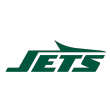
New York Jets
Play: Smash-7 | Personnel: 11 (3WR-1TE-1RB)

How it works: Just like the Giants' slant route we talked about above, this red zone passing concept from the Jets is more about personnel and alignment. To the open side, the Jets align the running back (R) wide -- removed from the core of the formation. But everyone in the stadium should know that dude isn't getting the ball. He is there to widen the defense and move the corner out if it's a zone look. Instead, the ball is going inside to Brandon Marshall (X) on the corner route. The goal here is to create room (why Marshall is in a tight split) while occupying the outside defender. That generates a window for Marshall in zone coverage and a matchup advantage versus man coverage. That's where he uses his size and catch radius to shied the defender from the ball with no immediate help over the top. Nice thing to have for quarterback Ryan Fitzpatrick. He doesn't even have to go through his progressions. Find Marshall. Sling it. Get six.
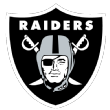
Oakland Raiders
Play: Tunnel Screen | Personnel: 11 (3WR-1TE-1RB)

How it works: The Raiders' tunnel screen to Amari Cooper is super cool because of the split flow action Oakland shows in the backfield. With the front side guard pulling, and running back Latavius Murray working through the QB-RB mesh point, linebackers can read this as an off-tackle power scheme or even a sweep to the open side of the formation. But the center and the front side tackle release while the slot receiver and tight end block, setting up as a nasty screen to defend. Plus, it is a high percentage throw for quarterback Derek Carr. A long handoff, really, with the ball going to one of the league's young stars in Cooper. Get blockers out in front, force defenders to find cut-off and watch Cooper run. This guy is ridiculous in the open field with his silky smooth change-of-direction skills. Split-flow on a screen? That's tough.

Pittsburgh Steelers
Play: Counter OF | Personnel: 13 (1WR-3TE-1RB)

How it works: Yes, the out route to Antonio Brown is nasty. Unstoppable at times, too. Align at the bottom of the numbers and run that thing all day. But I'm going with the Counter OF in Pittsburgh's playbook because it's old school and proven to produce when Le'Veon Bell is carrying the rock. And the Steelers run it to expose the cornerback on the edge. With Bell taking a counter (or slide) step, the Steelers block down on the edge and pull the guard and the tight end off the ball (or H-back). This allows the guard to kick out the cornerback to the short side of the formation while the H-Back pulls up through the hole. Plus, like the crack toss, the cornerback will usually widen, creating an even bigger running lane. And that's trouble versus Bell. This guy is so patient with the ball, and he has an electric burst to hit the hole. Forget about it.

Philadelphia Eagles
Play: Tare Route | Personnel: 11 (3WE-1TE-1RB)

How it works: With Doug Pederson taking over the Eagles, expect to see plenty of West Coast concepts in Philly -- the same stuff you watch when Andy Reid's Chiefs play. And the scheme I want to talk about is pure West Coast: the tare route. Now, this isn't unique, and it isn't going to produce some explosive play. But this league is also about keeping the chains moving. Here, the Eagles will put the running back (R) in a "chowed" alignment on the outside leg of the tackle to get him out quick. With the tight end (Y) running an out route and the Z receiver clearing out space on the fade, the running back (think Ryan Mathews or Darren Sproles) will be open every time. It's a quick high-to-low read for quarterback Sam Bradford with the backside double-slant combo. Hey, third-and-2 through third-and-6? You run this and move the sticks all day.

San Diego Chargers
Play: 7 route (TE Iso) | Personnel: 11 (3WR-1TE-1RB)

How it works: The Chargers and Philip Rivers want to find Antonio Gates in the red zone. Everyone knows it, including the defense. But the Chargers will still find ways to isolate Gates by formation and alignment to create that ideal matchup. Here, San Diego aligns Gates (Y) to the backside of a 3x1 formation with running back Danny Woodhead offset in the backfield. That allows Woodhead to run the quick angle route (while setting a natural pick for Gates). But the primary target is Gates -- and the defense has to respond. Do they match up a cornerback here? A safety? A linebacker? Versus all three, Gates has a matchup advantage because of his size, catch radius and route running. Don't let age fool you about Gates. This cat can still get open. And the tight split creates even more room for Gates to use his footwork to generate enough separation to the ball. Money.

San Francisco 49ers
Play: Hi-Lo Mesh | Personnel: 11 (3WR-1TE-1RB)

How it works: Chip Kelly loves the Hi-Lo Mesh concept, so expect to see it all year in San Fran regardless of who is starting at quarterback. With the Z receiver in a reduced split and the slot (H) aligned tight to the core of the formation, the 49ers are running inside crossing routes to free up targets underneath with the tight end (Y) basically setting a pick. However, the key to this play is the running back (R). This could be Carlos Hyde for the 49ers this season in that "chowed" alignment off the tackle's outside leg. Instead of bursting to the flat, Hyde releases on a rail route. This forces the linebacker in coverage to work through a bunch of trash (picks), while Hyde creates separation down the field. This is an opportunity to create an explosive play based on formation, alignment and scheme.

Seattle Seahawks
Play: Zone-Read | Personnel: 12 (2WR-2TE-1RB)

How it works: It's still the zone-read in Seattle. Yeah, the Seahawks run RPOs, and this scheme has the bubble screen built into it. But I'm more focused on Russell Wilson, the tight end's release and the bend for the running back off the mesh point. With the tight end (Y) taking an arc release, the safety in coverage has to respect this. In fact, that safety often reads this as a passing play, which eliminates him from the front while Wilson can now read through the path of the end man on the line of scrimmage. From there, it's a familiar drill: If the end man crashes, keep the rock (Q). If he stays up the field, then hand off on the zone (R). But it's the way the Seahawks' RB attack this run scheme that really stands out. In Seattle, the backs (Thomas Rawls, Christine Michael) look to "bend" this play. That means they take the handoff and bend back through the now-vacated space created by the end man staying up the field to play Wilson. It's a natural running lane that can be exposed. And it's like clockwork in Seattle.

Tampa Bay Buccaneers
Play: Swap Boot | Personnel: 21/Pony (2WR-1TE-2RB)

How it works: Boot plays in the deep red zone (plus 10-yard line) are great because the speed of the game increases. And that means defenders are often too quick with their run/pass keys, leading to busts. Here, the Bucs bring 21/Pony personnel onto the field (two tailbacks in the game) and align Charles Sims (F) in a wing alignment. At the snap, quarterback Jameis Winston (Q) and running back Doug Martin (R) show the toss action to pull the linebackers to the open side of the formation. However, this is a boot -- or a swap boot -- with Sims coming behind the line of scrimmage and the X receiver running a crossing route. With the tight end (Y) blocking down and then releasing, Winston has three immediate targets to hit (Sims is the primary). This is a great call to catch the defense in the red zone.
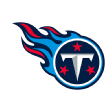
Tennessee Titans
Play: RPO (Pop Pass) | Personnel: 12 (2WR-2TE-1RB)

How it works: The RPO pop pass with quarterback Marcus Mariota is lethal because of his quick release. He gets the ball out hot. Here, the Titans are running an RPO with the inside zone paired to the pop (or slant). With Tennessee running the inside zone, the linebackers are going to attack downhill. That creates an open window (second-level defenders removed) to target the Z receiver on the pop. Mariota has to make this read based on his pre-snap count of the number of defenders in the box, but if he makes the right read, it's also an easy way to pick up a quick 10 yards.

Washington Redskins
Play: Double Post | Personnel: 12 (2WR-2TE-1RB)

How it works: The Redskins are very creative when trying to get tight end Jordan Reed the ball. Think of the routes from the slot, isolation looks, etc. He's a sweet route runner with rare matchup ability. My personal favorite is the red zone double post versus Cover 4 teams. It's almost automatic. Here, the Redskins show a stack look to the open side of the formation with Reed (U) removed from the formation. At the snap, the X receiver pushes hard up the middle of the field on the shallow post. That occupies the strong safety in Quarters coverage. He's gone. Now, Washington has a great one-on-one matchup with Reed versus a cornerback. He stems the route outside (widen the cornerback) and then breaks back on the deep post. With the strong safety removed, quarterback Kirk Cousins has a nice open window to target Reed. And that's another touchdown for the tight end.
